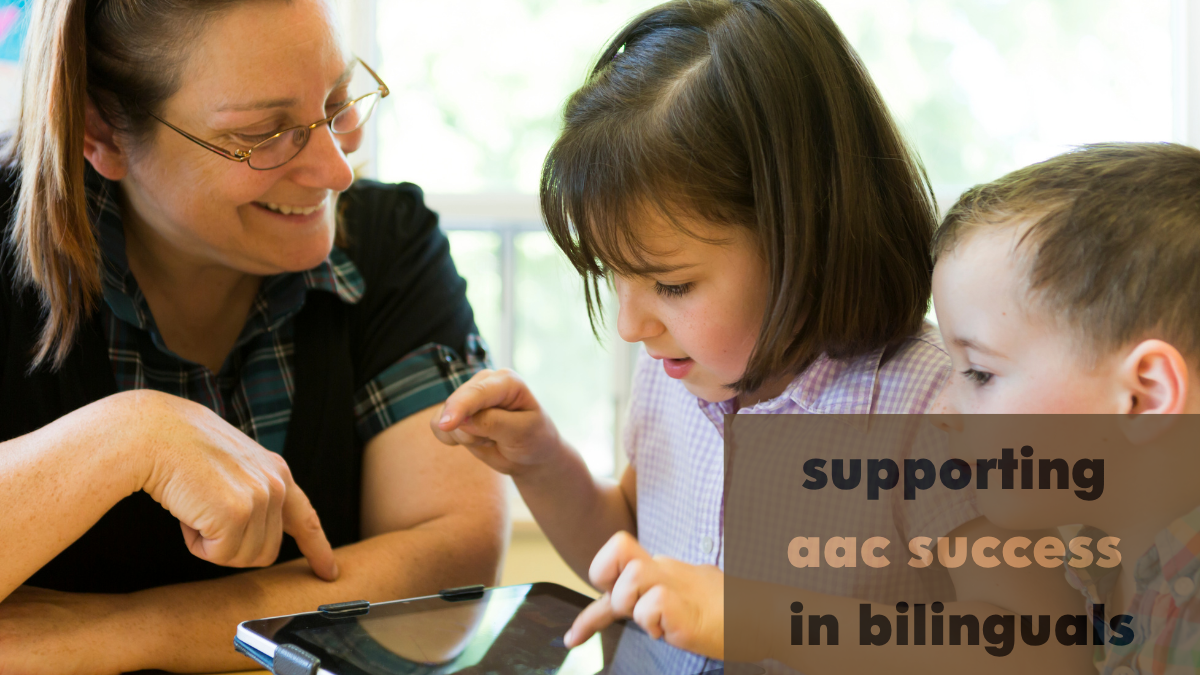Getting an AAC device is a significant step towards ensuring better outcomes for a child with complex communication needs. However, that is only the start of the child’s communication journey. Family members need to be aware of ways to ensure that AAC adoption is effective. Here are a few communication interventions strategies for families that aids in successful AAC implementation at home –
Understanding the Communication Partner’s Role


All children thrive when supported adequately at home. Children with disabilities, especially, may rely heavily on the support of family members. So, families must realize the prominent role they play in the child’s AAC intervention.
A communication partner needs to be a teacher, playmate, and more. The more AAC aware the partner is, the easier it is for the child to take to AAC. Family members, therefore, need to be motivated to provide an AAC solution for the child’s communication challenges. They also need to be on the same page about AAC use around the home. Moreover, families must also collaborate with professionals to make sure the child effectively uses their AAC system.
The What, When, and How of Modelling
Modelling is one of the most efficient communication intervention strategies for families. However, parents are often unsure of how to go about modelling. When to model? How to model? What words to model? These are common questions most families have while supporting emergent AAC learners.
- When to Model?
Whenever you can.
Lots and lots of modelling helps the child gain exposure to language use. However, it is easier said than done. So, there’s no need for families to feel under pressure to model all the time. Just remember to model on the child’s AAC system whenever possible.
- What to Model?
Not necessarily every word you speak to the child. That will exhaust both you and the child.
Model only ‘keywords’ on the AAC system.
For example, if you want to say, “I am going to the store”, model the words ‘go’ and ‘store’.
Find more modelling strategies here
- How to Model?
Speak full sentences or phrases, model only keywords.
Make sure you have the child’s attention before you start modelling. Say the words out loud as you tap them on the child’s AAC system. Find ways to model the same word repeatedly and in different scenarios.
Creating vs Seizing Communication Opportunities


Should we fabricate communication opportunities for the child? Or should we embed AAC into family routines? We may need to do a bit of both for children with communication deficits. Yes, using AAC every chance we get sounds great. But to motivate beginning communicators, we may have to set up communicative temptations.
For example, the child’s favourite activity such as playtime can be a great motivator for AAC use. If the child loves playing with a ball and finds it funny when you throw it up high in the air, that can be an excellent communication opportunity.
Find interesting games and activities for communication opportunities here.
All the communication intervention strategies for families mentioned above focus on creating an immersive AAC environment at home. Moreover, they emphasize meaningful interactions that enrich the lives of AAC learners and their family members.
References:
http://lindaburkhart.com/wp-content/uploads/2016/04/Engaging_families_handout_Porter_Burkhart.pdf
https://www.dsrf.org/programs-&-resources/learn-at-home-5196/top-3-tips-for-using-aac-at-home



